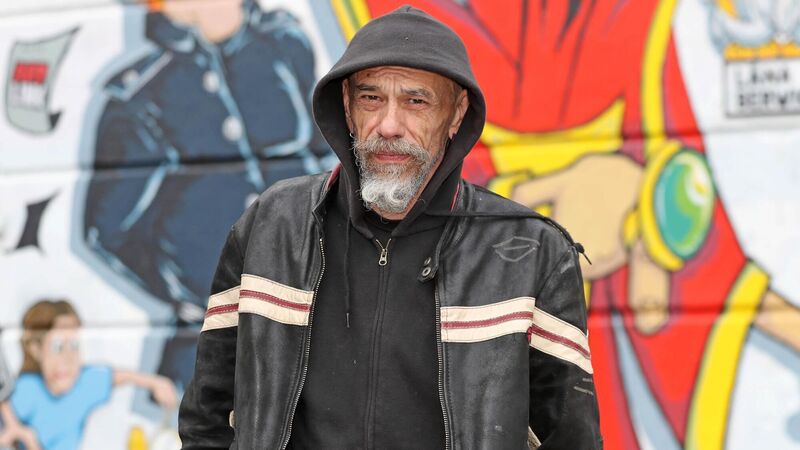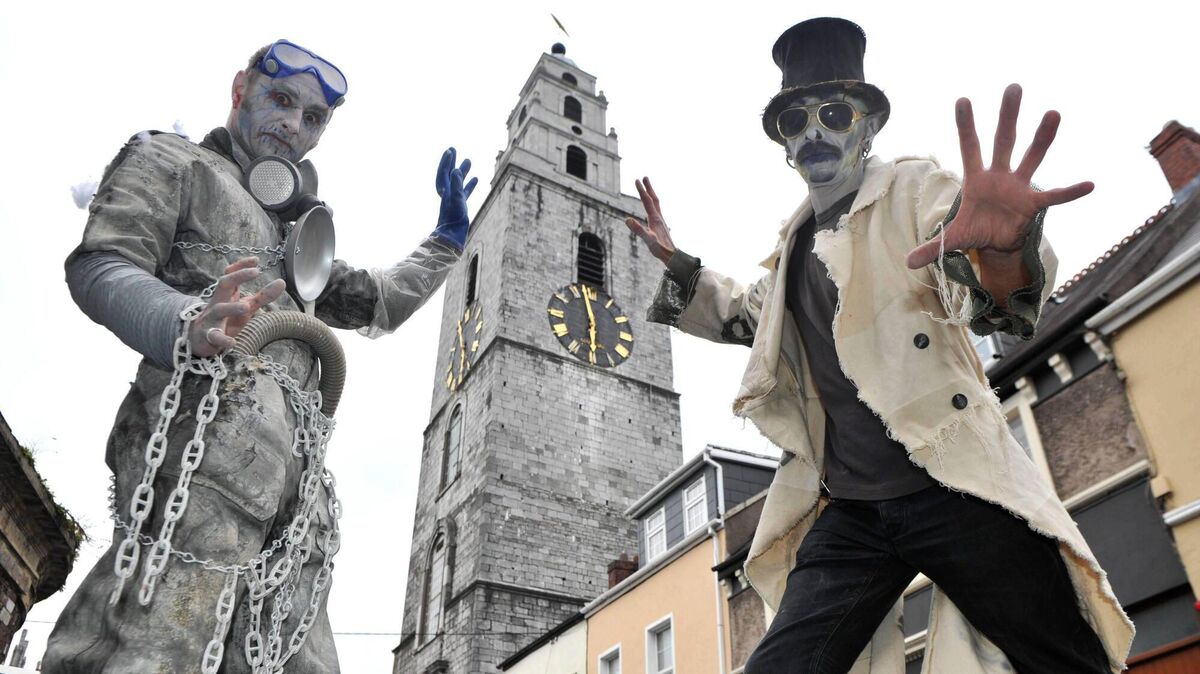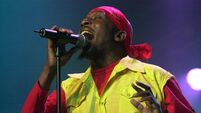William Frode de la Foret: 'The street is the most democratic canvas for art'

William Frode de la Foret of Cork Community Art Link is one of the contributors to the Streets Ahead development programme. Picture: Jim Coughlan
The name William Frode de la Foret may not be familiar to you. But if you live in Cork, his tall, narrow-framed figure probably is. You might have seen him at the annual Halloween Dragon of Shandon parade, top-hatted, stalking the crowd in his role as master of ceremonies, a Tim Burton illustration come to life.
Or in the background at any one of a vast number of street art events in the second city, where he is often found striding restlessly to and fro between participants, intent on last-minute logistics.
Frode de la Foret has been in Cork for 30 years, he says, in his strong French accent: “I am more from Cork than not, now. I’ve spent more time in Ireland than any other country.” As the artistic director of Cork Community Art Link (CCAL), the Paris-born artist displays a constant, radical commitment to community engagement with the arts, and with the role of Street Art in empowering marginalised communities.
The streets are for the people, and creative expression is a right for all, he fervently believes.
“Cultural democracy is still hard to digest for many, but everybody has the right to participate in the culture of their city,” he says. “How many Traveller artists are known in this country, for example? Nowhere near enough, to my taste.”
When Ron Melling founded Cork Community Art Link in 1993, a young Frode de la Foret was the first person employed there, on a Community Employment scheme. He had landed on Irish shores following a period of globe-trotting.
Ever since, he’s worked with a staggering array of marginalised and often vulnerable communities including those with mental and physical disabilities, early school-leavers, youth projects in disadvantaged areas. He says his 10-year arts programme in Our Lady’s psychiatric hospital Cork was the longest-running project of its kind in the country.

The Arts Council’s emerging recognition of Street Art is evident in new funding streams available for Street Art and Spectacle, for Circus. Frode de la Foret and many others, members of ISACS (the Irish Street Arts, Circus & Spectacle Network), have campaigned long and hard for recognition for artforms that, when Frode de la Foret arrived in Ireland, were considered “kindergarten work” in many Fine Art circles.
The democratising force of the internet, too, has raised the profile of street arts, most notably graffiti, he says.
“I think graffiti has done so much to entice the public to look at art. More, I think, than museums have done. Because it’s there, in the full view of where people live, work and play.
“The street is the most democratic canvas for art. We need more and more spaces managed by communities. Not by cultural institutions, I’m very clear on that. There needs to also be freedom from cultural institutions. People need to take their own decisions, to decide what they want on their walls and on their streets.” As busy as ever, Frode de la Foret has several projects in the pipeline: an installation based on Irish mythology in Bishop Lucey Park for Patrick’s Day, a large mural with Cork Traveller Visibility Network.
He’s also contributing his expertise to Streets Ahead, a programme developed by Cork City Council in partnership with the Irish Street Arts, Circus and Spectacle Network (ISACS) and supported by Creative Ireland.
“I pushed a good bit to have a section devoted to how communities can access resources, information, funding etcetera,” he says. “If you’re a group of old folks, and you want to make a mural or have a performance to celebrate someone from your community, how do you do that?” The annual Samhain Dragon of Shandon Parade, postponed of course in 2020, is CCAL’s spectacular and performative culmination of months of work with different groups.
“At the time a lot of it was instinctive, but we started the parade because there was no space that would have been interested in showing the work we made with the kids we were working with,” he says.
“We work with plenty of different media: drama, visual art, music, dance. Different skills and modes of expression. It was a way to reappropriate the city, to show that they existed, that they had the right to participate in their own culture.”
His deep belief in the transformative power of artistic expression is founded, he says, in his own upbringing.
Born in Paris, with a childhood shared between the suburbs of the French capital and Brittany, he was an early school-leaver, who turned to graffiti and stencilling to express himself: when he’s working with youngsters who haven’t been given any particular agency in their lives, who are finding a voice through art, he identifies. “I was that young guy,” he says simply.
Streets Ahead, Street Arts: From History to How To has a programme of online events taking place every Tuesday from April to June 2021. Full programme and information at isacs.ie.



